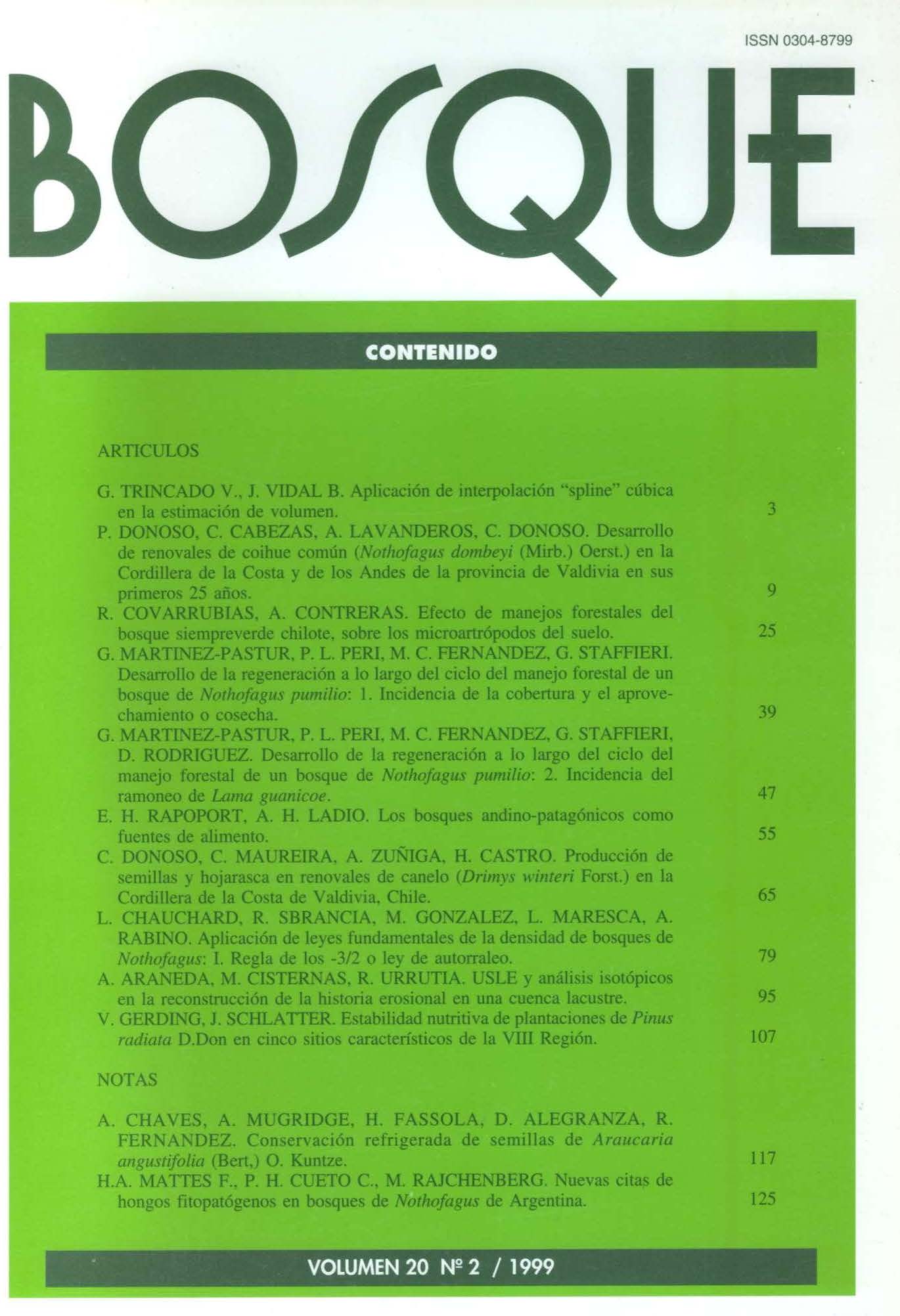USLE and isotopic analysis to determine the historical soil erosion in a lacustrine watershed
Main Article Content
Abstract
Two different methodologies were used for estimating the historical variations in soil losses for a lacustrine watershed in the Nahuelbuta Mountain Range (Laguna Chica de San Pedro, VIII Region). The first approach is based on the Universal Soil Loss Equation (USLE), while the second one focuses on an isotopic analysis ( 210Pb) of the lake sediments. In both cases, important temporal variations in sediment production were obtained. Values estimated with the USLE equation ranged from 0.45 to 1.00 t ha - 1 yr- 1 . Alternatively, values determined by isotopic analysis were between 0.10 and 1.16 t ha-1 yr- 1 . Comparing the results of both methodologies, similar tendencies can be observed for the years 1955-1981. However, some significant differences appeared both at the beginning and at the end of 1943-1955 and 1981-1994. This could be explained by the low resolution of USLE, since in this study it cannot distinguish the differential soil protection offered by native forest or exotic forestry.

